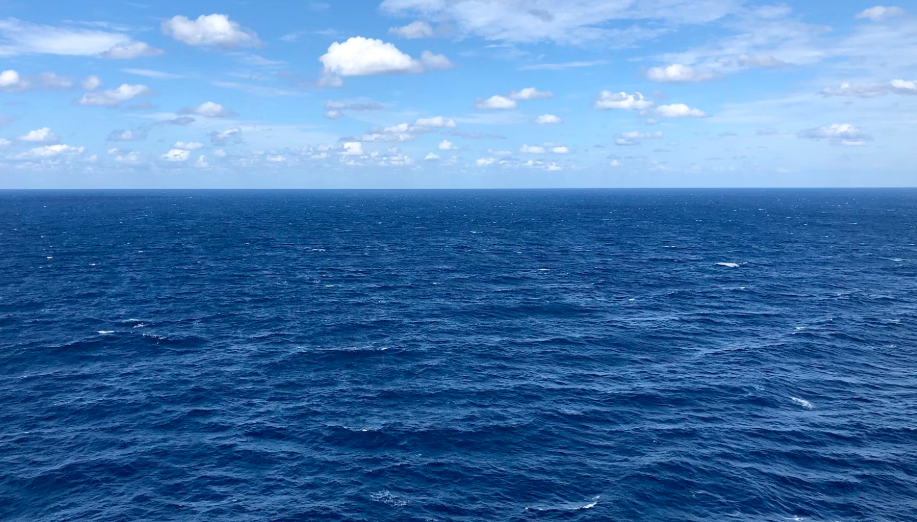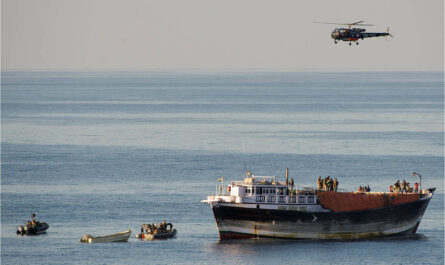The Atlantic Ocean, the world’s second-largest ocean, is not only a majestic body of water but also a vital ecosystem that sustains an incredible diversity of marine life and plays a pivotal role in regulating the planet’s climate. Covering over 106 million square kilometers, the Atlantic connects continents, drives global weather patterns, and nurtures habitats that range from bustling coral reefs and seagrass beds to mysterious deep-sea environments. Yet, despite its immense value, the Atlantic Ocean faces severe threats from overfishing, habitat destruction, pollution, and climate change. In response, a wide array of conservation laws and initiatives have been enacted to protect this precious resource. These measures, spanning the establishment of marine reserves to the enforcement of stringent pollution controls, represent a united global effort to safeguard the Atlantic for future generations.
The Importance of the Atlantic Ocean
The Atlantic Ocean is a lifeline that supports both ecological balance and human civilization. Its waters host species from microscopic plankton to the largest whales, contributing to a dynamic and interconnected food web. Beyond its rich biodiversity, the Atlantic is critical for global climate regulation. It absorbs vast amounts of carbon dioxide and heat, helps drive weather systems like the Gulf Stream, and redistributes nutrients across continents. In doing so, the Atlantic moderates regional climates and supports agricultural and economic systems around its shores.
However, human activities have placed enormous strain on this ecosystem. Overfishing has led to the depletion of key fish stocks, while plastic pollution and chemical contaminants have reached even the remotest parts of the ocean. Additionally, climate change is causing ocean acidification and warming sea temperatures, further destabilizing marine habitats. Recognizing these challenges, governments, international organizations, and conservation groups have implemented a variety of laws and policies designed to protect the Atlantic Ocean’s resources and ensure their sustainable use.
Marine Reserves and Protected Areas
One of the most effective tools in marine conservation is the establishment of marine reserves and protected areas. These designated zones restrict or regulate human activities such as fishing, drilling, and mining, providing sanctuaries where marine life can flourish and ecosystems can recover.
The Role of Marine Reserves
Marine reserves are legally protected areas where human exploitation is limited, if not entirely prohibited. These zones serve as safe havens where overexploited species can rebuild their populations, and degraded habitats such as coral reefs and seagrass beds can regenerate. By preserving critical habitats, marine reserves contribute to maintaining biodiversity and bolstering the resilience of marine ecosystems in the face of climate change. Moreover, healthy marine ecosystems can have spillover benefits, with thriving populations within reserves sometimes migrating into surrounding areas, thereby enhancing regional fishery yields and supporting local economies.
Notable Marine Reserves in the Atlantic
Across the Atlantic, several marine reserves have been established as flagship examples of conservation success:
- The Northeast Canyons and Seamounts Marine National Monument (USA):
Located off the coast of New England, this monument spans an impressive 12,725 square kilometers. It includes underwater canyons, seamounts, and deep-sea habitats that are home to rare corals, sponges, and a diverse assemblage of fish species. By prohibiting commercial fishing and resource extraction, the monument provides a refuge for marine species and helps scientists study untouched deep-sea ecosystems. - The Azores Marine Park (Portugal):
Situated in the mid-Atlantic, the Azores Marine Park is one of Europe’s largest marine protected areas, covering over 1 million square kilometers. The park encompasses a mosaic of habitats—from deep-sea hydrothermal vents and seamounts to nutrient-rich waters favored by migratory species. This vast protected area is essential for species such as blue whales, loggerhead turtles, and many pelagic fish, making it a key site for both conservation and scientific research. - The South Georgia and South Sandwich Islands Marine Protected Area (UK):
Covering 1.24 million square kilometers in the South Atlantic, this protected area is renowned for its pristine and relatively undisturbed marine environment. It plays a critical role in preserving the Antarctic food web by safeguarding breeding grounds for penguins, seals, and the krill populations that are central to the region’s ecological balance. - Emerging Marine Reserves and Future Opportunities:
Many coastal nations bordering the Atlantic are now exploring the expansion of their marine protected areas. New proposals are underway to extend protected zones around sensitive coastal habitats, particularly in regions experiencing rapid development or heavy fishing pressure. These initiatives underscore the growing recognition that a network of interconnected marine reserves is vital for the long-term health of the Atlantic ecosystem.
International Agreements and Frameworks
National conservation efforts are often complemented by international agreements designed to address issues that cross national boundaries. Transboundary challenges such as overfishing, marine pollution, and habitat degradation require coordinated strategies, and several international treaties have been instrumental in protecting the Atlantic Ocean.
The Convention on Biological Diversity (CBD)
The CBD is a global treaty with a comprehensive mandate to conserve biological diversity, promote sustainable resource use, and ensure the fair sharing of benefits derived from genetic resources. Under the CBD, countries have committed to protecting at least 10% of their marine and coastal areas—a target that some regions of the Atlantic have already exceeded. The treaty has spurred the development of national biodiversity strategies and action plans that incorporate marine conservation as a priority.
The OSPAR Convention
The OSPAR Convention is a regional agreement among 15 European countries and the European Union, dedicated to protecting the marine environment of the North-East Atlantic. OSPAR’s efforts include the establishment of a network of marine protected areas, the implementation of measures to reduce hazardous substances, and the sustainable management of fish stocks. The convention provides a robust framework for monitoring environmental quality and coordinating responses to marine pollution incidents, such as oil spills and chemical discharges.
The International Commission for the Conservation of Atlantic Tunas (ICCAT)
ICCAT is an intergovernmental organization that focuses on the sustainable management of tunas and tuna-like species within the Atlantic. Through rigorous scientific assessments and management measures, ICCAT strives to prevent overfishing and ensure that tuna populations remain viable for both ecological and economic purposes. Its work is critical, as tuna fisheries not only support coastal communities but also have far-reaching impacts on marine food webs.
Other Regional Initiatives
In addition to these major treaties, numerous regional initiatives and partnerships contribute to the conservation of the Atlantic Ocean. From collaborative research programs to joint enforcement operations against illegal fishing, these efforts illustrate the shared responsibility among Atlantic-bordering nations to protect their common resource.
Pollution Controls: Tackling the Plastic Crisis and Beyond
Pollution represents one of the most pressing threats to the Atlantic Ocean. Plastic waste, chemical contaminants, and oil spills cause widespread harm to marine organisms and degrade critical habitats. In response, governments and international bodies have implemented a series of pollution control measures aimed at reducing the influx of harmful substances into the ocean.
The MARPOL Convention
The International Convention for the Prevention of Pollution from Ships (MARPOL) is a cornerstone of global efforts to reduce marine pollution. MARPOL establishes strict regulations to minimize the discharge of oil, sewage, garbage, and other harmful substances from ships. The treaty has driven the adoption of cleaner technologies in the shipping industry and significantly reduced the frequency and severity of oil spills in the Atlantic. By enforcing these standards, MARPOL helps protect the ocean’s water quality and preserve marine habitats.
The Global Partnership on Marine Litter
Marine litter, particularly plastic pollution, has become a symbol of the broader environmental challenges facing the Atlantic. The Global Partnership on Marine Litter is a collaborative initiative that unites governments, businesses, and civil society to address this crisis. The partnership’s activities include public awareness campaigns, coordinated clean-up efforts, and the development of policies to reduce plastic production and improve waste management. Such initiatives are vital in stemming the tide of plastic pollution that threatens marine life and human health alike.
National Efforts to Combat Plastic Pollution
Many countries along the Atlantic coast have taken proactive steps to address plastic pollution. For example:
- The European Union’s Single-Use Plastics Directive: This directive bans certain single-use plastic products and encourages the use of more sustainable alternatives. It represents a major policy shift aimed at reducing plastic waste at its source.
- The United States’ Save Our Seas Act: This law aims to improve waste management practices, reduce marine debris, and enhance funding for marine cleanup operations. It underscores the growing recognition of the need for robust legislative frameworks to tackle marine pollution.
Tackling Chemical and Agricultural Runoff
In addition to plastic waste, chemical pollutants from agriculture and industry contribute to the degradation of the Atlantic Ocean. Nutrient runoff from fertilizers, pesticides, and industrial discharges can lead to harmful algal blooms, dead zones, and the disruption of marine ecosystems. New policies are emerging that focus on reducing these contaminants through improved agricultural practices, stricter industrial regulations, and better wastewater treatment standards.
Climate Change and Ocean Acidification
Climate change is perhaps the most pervasive threat facing the Atlantic Ocean today. Rising sea temperatures, shifting ocean currents, and the increasing acidification of seawater are reshaping marine environments in profound ways. These changes not only affect the distribution and behavior of marine species but also compromise the overall resilience of the ocean ecosystem.
The Paris Agreement
The Paris Agreement is a landmark global treaty aimed at limiting global warming to well below 2°C above pre-industrial levels. By committing to substantial reductions in greenhouse gas emissions, the agreement seeks to mitigate the impacts of climate change on the Atlantic Ocean. Lower greenhouse gas emissions can slow the rate of ocean warming and acidification, reducing the frequency of coral bleaching events, the disruption of fish migration patterns, and the overall stress on marine ecosystems.
Blue Carbon Initiatives
Coastal and marine ecosystems—such as mangroves, seagrasses, and salt marshes—play a crucial role in carbon sequestration, often referred to as “blue carbon.” These habitats capture and store carbon dioxide from the atmosphere, helping to mitigate climate change. Blue carbon initiatives focus on protecting and restoring these vital ecosystems, enhancing their capacity to absorb carbon while simultaneously preserving biodiversity and protecting coastal communities from storm surges and erosion. By integrating blue carbon into conservation strategies, policymakers aim to create a win-win scenario that addresses both climate change and marine biodiversity loss.
Adaptation and Resilience Measures
As the effects of climate change accelerate, conservation laws are increasingly incorporating adaptation and resilience strategies. These measures include:
- Ecosystem-Based Adaptation: This approach uses the natural protective functions of healthy ecosystems—such as the buffering capacity of mangroves and coral reefs—to reduce the impacts of climate-related events like hurricanes and sea level rise.
- Restoration Projects: Efforts to restore degraded habitats, including seagrass meadows and coastal wetlands, can help rebuild the natural resilience of marine ecosystems, making them more capable of withstanding environmental changes.
- Scientific Monitoring: Advanced monitoring programs, including satellite imaging and in-situ sensors, are crucial for tracking ocean changes in real time. This data informs policy decisions and ensures that conservation strategies are responsive to emerging threats.
Challenges and Future Directions
Despite the considerable progress made through conservation laws and initiatives, significant challenges remain in protecting the Atlantic Ocean. Enforcement of existing laws is often hampered by limited resources and the vast, remote nature of many marine areas. Additionally, climate change continues to exacerbate stress on marine ecosystems, demanding more robust and adaptive management strategies.
To address these challenges, future conservation efforts should focus on several key areas:
1. Strengthening International Cooperation
Transboundary issues—such as illegal fishing, marine pollution, and climate impacts—demand coordinated responses from nations bordering the Atlantic. Strengthening international agreements, enhancing joint enforcement efforts, and sharing scientific data across borders will be essential to achieving lasting conservation outcomes.
2. Expanding the Network of Marine Protected Areas
While many important marine reserves have been established, vast areas of the Atlantic remain vulnerable. Expanding protected zones, especially in regions that have historically been overlooked, will provide more comprehensive safeguards for critical habitats and biodiversity hotspots. A well-connected network of marine protected areas can also facilitate the migration of species and bolster the overall resilience of the ecosystem.
3. Promoting Sustainable Fisheries
Overfishing continues to be a major threat to the Atlantic’s biodiversity. Implementing science-based fisheries management plans, enforcing sustainable catch limits, and encouraging responsible fishing practices are vital for ensuring that fish populations remain robust. In many regions, community-based management and co-management frameworks are emerging as effective tools to balance economic interests with ecological sustainability.
4. Enhancing Pollution Controls and Waste Management
As new pollutants emerge and existing contaminants persist, continuous improvement of pollution control measures is essential. Strengthening regulatory frameworks, promoting innovation in waste management and recycling, and investing in pollution cleanup technologies can dramatically reduce the environmental footprint of human activities on the Atlantic Ocean.
5. Raising Public Awareness and Engagement
Ultimately, the success of conservation laws hinges on widespread public support. Education and outreach programs that highlight the importance of the Atlantic Ocean—not only as a source of food and economic prosperity but also as a key regulator of global climate—are crucial. By engaging citizens, local communities, and stakeholders in conservation efforts, governments can build a broad base of support for the policies needed to protect this vital resource.
Conclusion
The Atlantic Ocean is more than just a vast body of water; it is a dynamic, life-sustaining system that underpins both environmental and human well-being. Its immense biodiversity, critical role in climate regulation, and economic importance make it a resource of unparalleled value. Yet, the Atlantic is under siege from overfishing, pollution, habitat degradation, and climate change—threats that require comprehensive and coordinated conservation efforts.
Through the establishment of marine reserves, the negotiation of international treaties, the implementation of pollution control measures, and the proactive management of climate impacts, conservation laws are providing a lifeline for the Atlantic Ocean. These efforts, however, are only the beginning. With challenges growing more urgent every day, there is an immediate need to strengthen international cooperation, expand protected areas, and promote sustainable practices across all sectors that interact with the ocean.
By working together—governments, organizations, communities, and individuals—we can forge a future in which the Atlantic Ocean continues to thrive. The laws and policies enacted today represent a collective commitment to protecting one of the planet’s most vital natural resources. Yet, they must evolve and expand to meet the challenges of the 21st century and beyond.
The Atlantic Ocean is not just a repository of marine life; it is a dynamic engine that drives weather patterns, supports global economies, and maintains the delicate balance of our planet’s climate. As we confront the escalating impacts of climate change and environmental degradation, the responsibility to protect the Atlantic becomes ever more urgent. In safeguarding this ocean, we are also securing a sustainable future for generations to come.
In the face of adversity, the Atlantic stands as a testament to nature’s resilience and our capacity for collective action. The comprehensive array of conservation laws—from the creation of extensive marine reserves to the rigorous controls on pollution—demonstrates that when humanity unites around a common goal, positive change is possible. Let this be a rallying cry for further action, inspiring us all to embrace our shared responsibility and commit to a future where the Atlantic Ocean, vibrant and full of life, endures as a beacon of hope for our planet.



